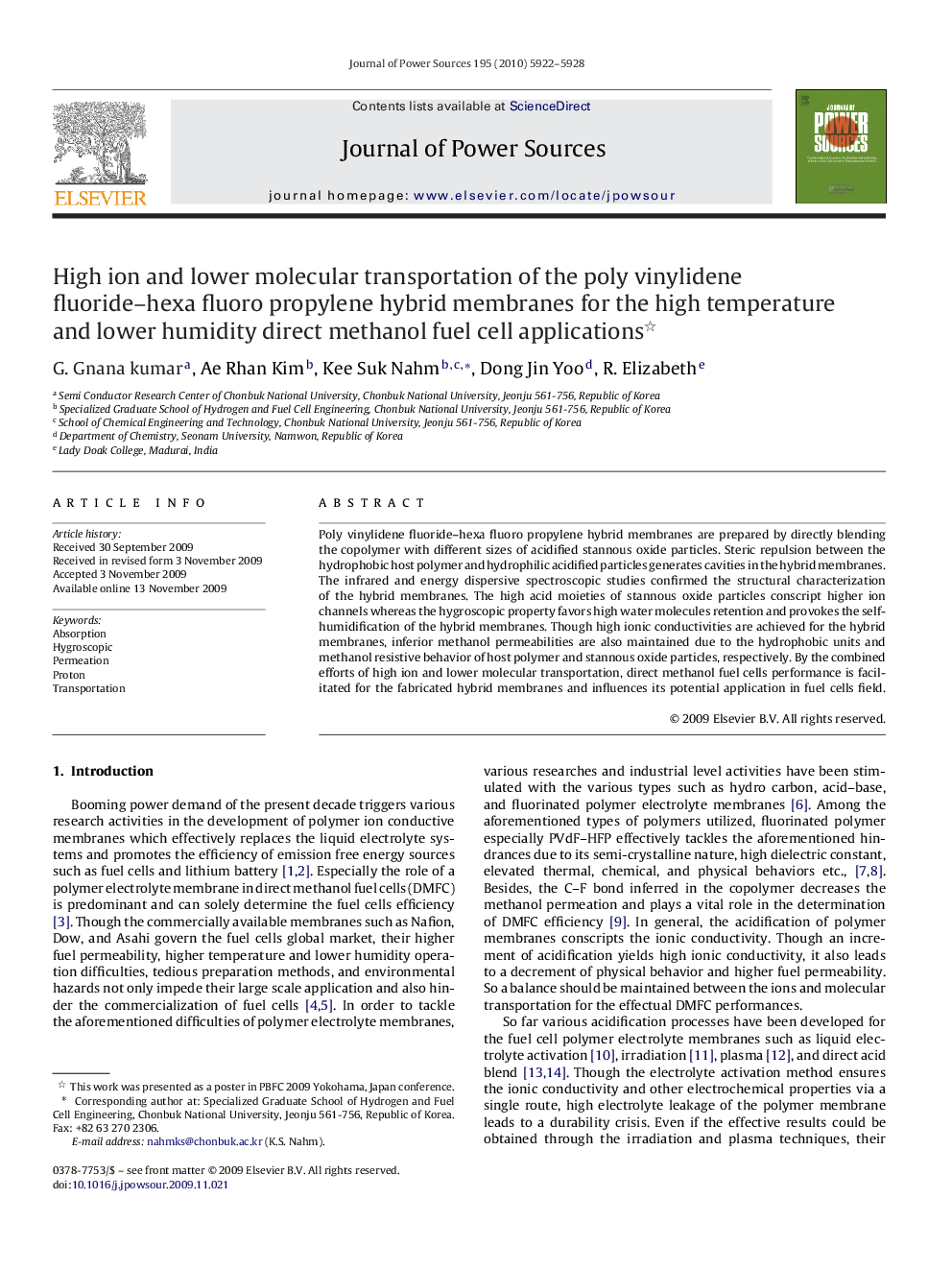| Article ID | Journal | Published Year | Pages | File Type |
|---|---|---|---|---|
| 1288980 | Journal of Power Sources | 2010 | 7 Pages |
Poly vinylidene fluoride–hexa fluoro propylene hybrid membranes are prepared by directly blending the copolymer with different sizes of acidified stannous oxide particles. Steric repulsion between the hydrophobic host polymer and hydrophilic acidified particles generates cavities in the hybrid membranes. The infrared and energy dispersive spectroscopic studies confirmed the structural characterization of the hybrid membranes. The high acid moieties of stannous oxide particles conscript higher ion channels whereas the hygroscopic property favors high water molecules retention and provokes the self-humidification of the hybrid membranes. Though high ionic conductivities are achieved for the hybrid membranes, inferior methanol permeabilities are also maintained due to the hydrophobic units and methanol resistive behavior of host polymer and stannous oxide particles, respectively. By the combined efforts of high ion and lower molecular transportation, direct methanol fuel cells performance is facilitated for the fabricated hybrid membranes and influences its potential application in fuel cells field.
